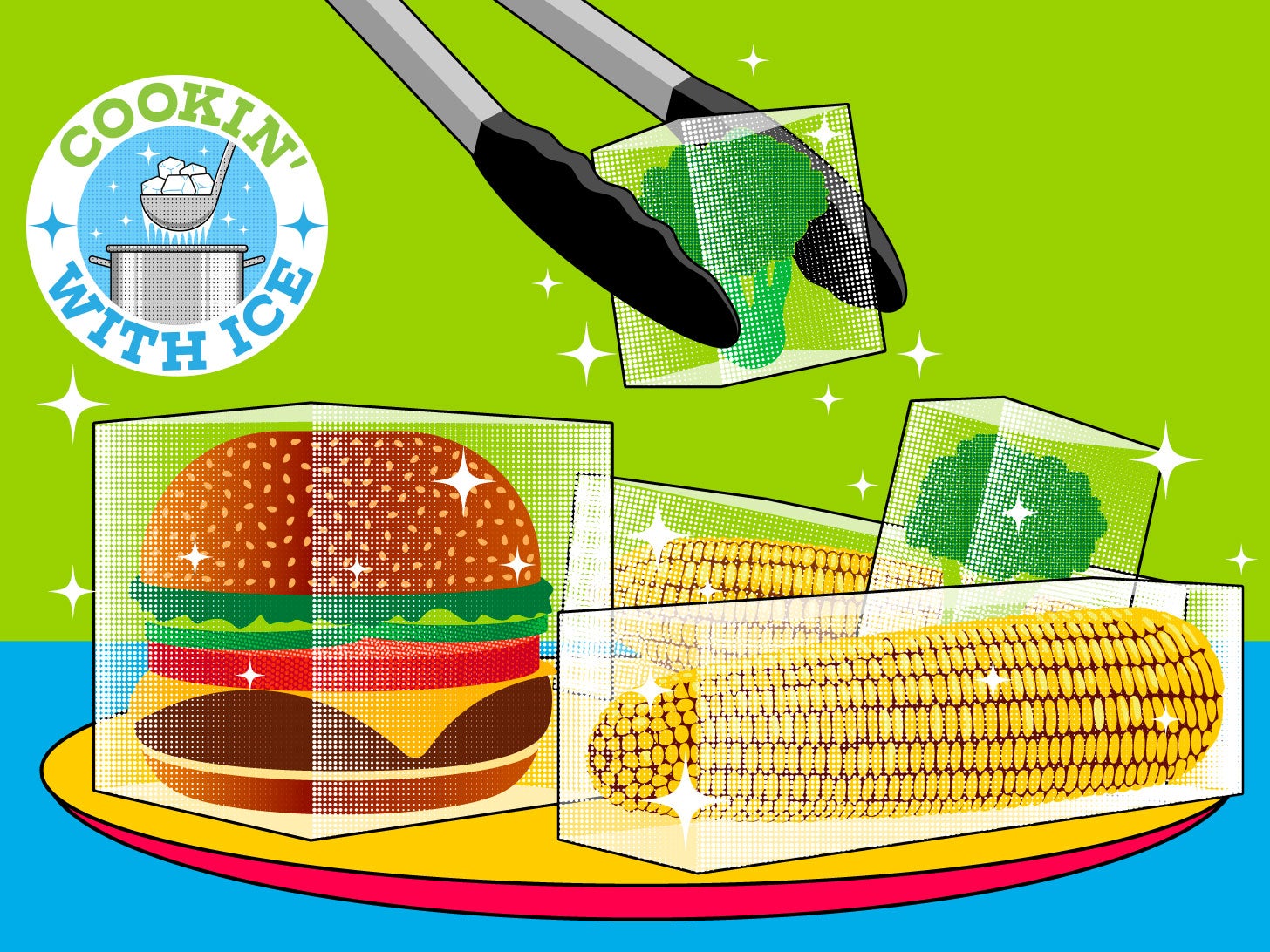We’re about to hit that sweet time of year when late-spring and summer produce is poppin’ off, and farmers markets and grocery stores are bursting with the vibrant fruits and veggies of the season. It’s all also deliciously cheap. So cheap that you might be tempted to overbuy like it’s a ShopRite can-can sale. Unlike those tins of beans, though, this stuff isn’t gonna last in the pantry until next year—unless you treat your freezer like an extension of your pantry.
Your freezer is a cheat code in the fight against food waste, but it’s also so much more than that. It’s a fast-track to speedy weeknight dinners, and a tool to make some foods taste better than before they went into cold storage. Our series, Cookin’ with Ice, serves up the know-how you need to make the most of this unsung kitchen gadget.
The 3 rules of freezing anything
Extreme cold works as a food-preservation technique because it shuts down grub’s metabolic activity—as well as that of spoilage-causing microbes. Temperature swings and improper packing, though, can make vittles unappetizing when they emerge from the chiller. But avoiding the brunt of those icy issues takes only a wee bit of know-how. Master these three rules, and you’ll be able to keep the quality of your vittles from going downhill.
Why you should freeze tofu
When you put food on ice, you’re not freezing the carrot or cherry or leftover chili; you’re freezing the water inside it. Ice crystals are larger and pointier than liquid water, which means they can bust through a food’s structure. Sometimes this is bad (see the mush that is frozen and thawed pasta), but sometimes it’s wonderful. Such is the case with starchy sweet potatoes and tofu, which achieves a whole new level of flavor-sponge when it comes out of cold storage.
Make your ice-cube tray a zero-waste wonder
All too often, home cooks wind up with wee quantities of this-or-that in the back of the fridge at the end of a recipe. The tiny compartments of an ice cube tray are the perfect vehicle for storing surplus sauces, stocks, herbs, and aromatics in perfectly portioned and quick-thawing pieces. They’re also the centerpiece of our signature method for meal-prep, which taps a premade library of frozen sauces to make speedy suppers like fried rice, biryani, and tagine on a sheet pan.
How to organize your freezer
Knowing how and what to freeze is all for nothing if your chilly appliance is a mysterious black hole of distant food memories. Once arranged for maximum visibility and convenience, however, your super-cool pantry will make it easier to eat deliciously and with way less waste. We’ve developed a system that works for any type of freezer—upper, lower, or side—that includes what to stow, how to stow it, and how to arrange the space for its ultimate retrieval and enjoyment.

